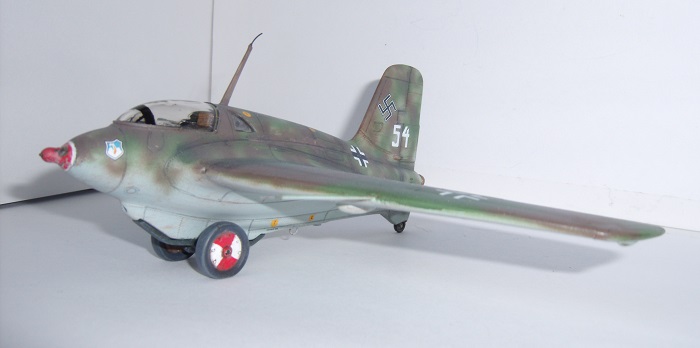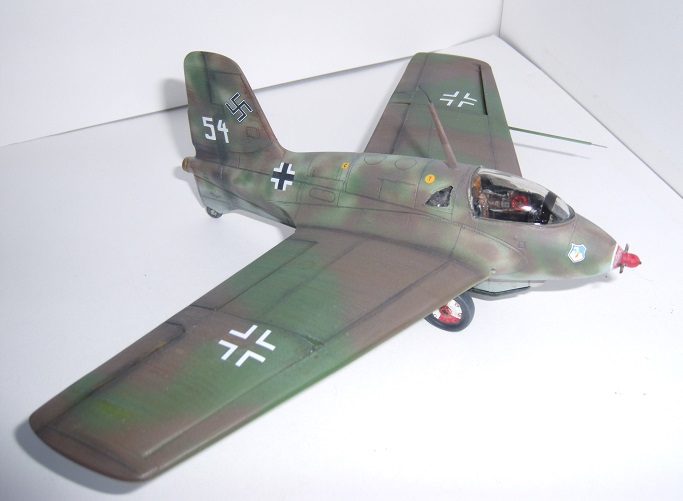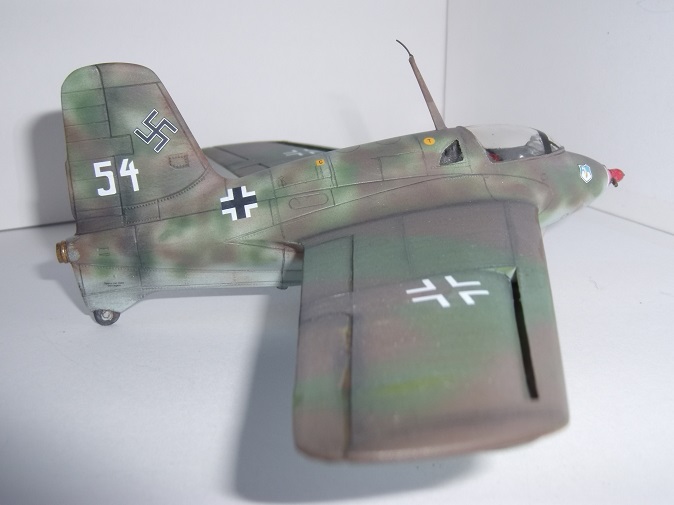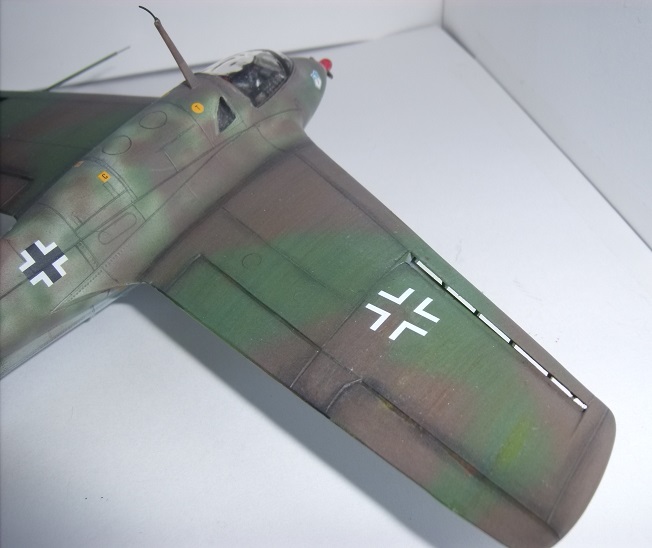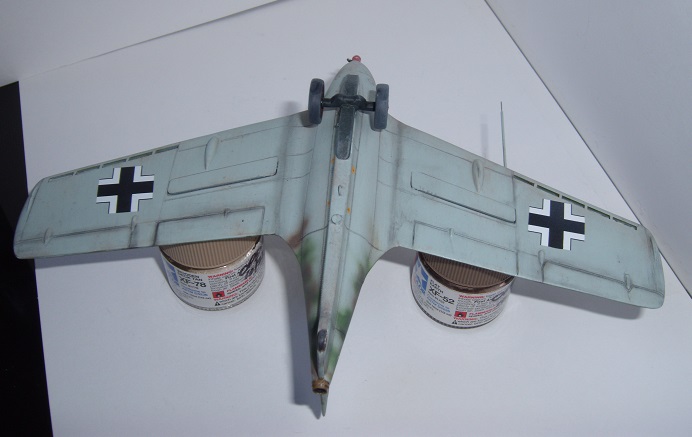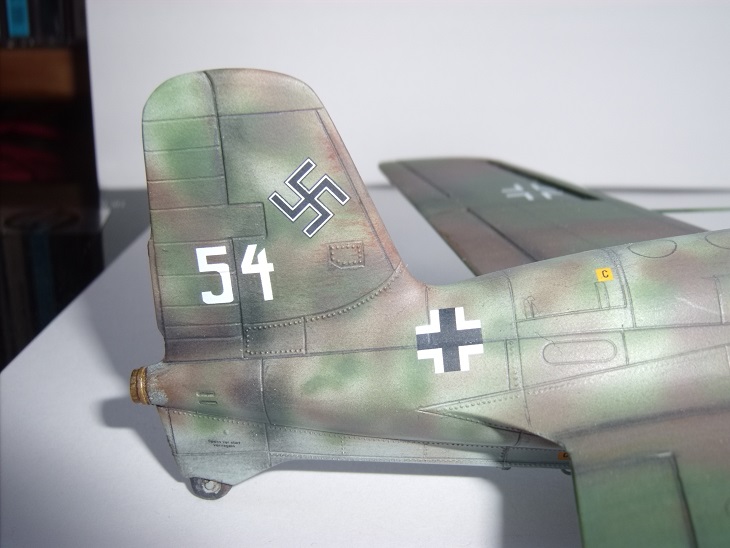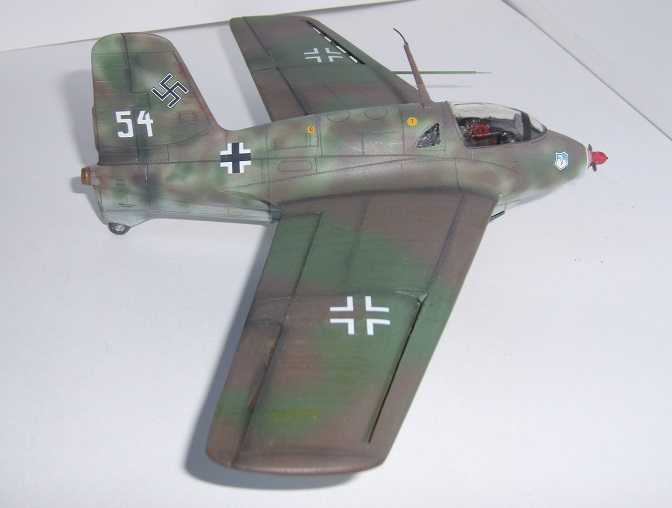

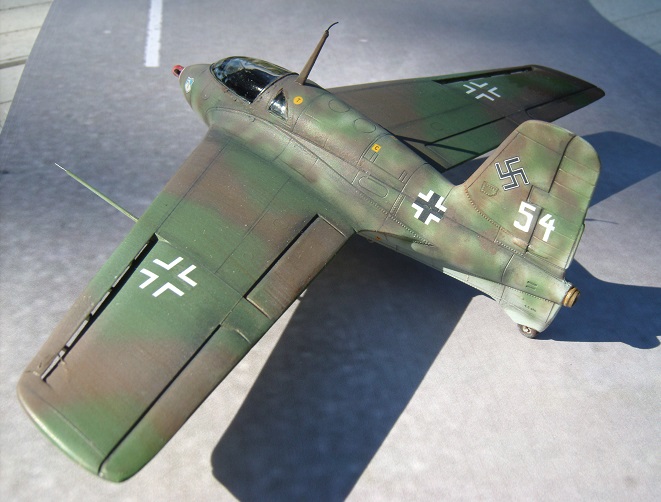
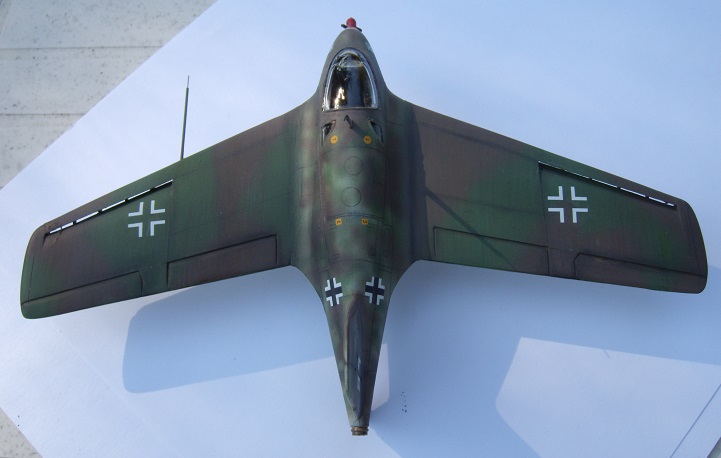
This early-'80s re-release of the early-'60s-vintage Hawk kit is almost universally trashed (particularly in comparison to the Trimaster kit, which appeared some 30 years later); in fact it's just a product of its time, a fairly decent basic shape lacking in any real detail. Since it is actually such a simple airframe, this is by no means the disaster the more rabid of the modeling pundits would have you believe. If one were to choose to scratchbuild a super-detailed cockpit -- since a poor pilot and seat are the only interior features provided in the kit -- the Komet's spare cockpit would perhaps be the easiest cockpit I know of (including aircraft of both world wars) to reproduce. By far the worst part of the kit is the canopy, which has a thickness common to kits of this vintage, and has the frame lines of the distinctive armor-glass panel...which was a separate piece on the real aircraft, mounted on the shroud above the instrument panel...inscribed on the interior of the canopy. It also has a weird, 'wavy' molded shape on the canopy's inside surface which is quite impossible to fix or hide short of vac-/stretch-forming another one. (However, since I was planning on leaving the canopy closed, I just painted the frame and added a clear piece for the armor glass fitted inside; through the thick canopy, it actually looks okay.)
I got the LoneStar Models resin set for the cockpit because it was cheap and available at the time. Molding was only so-so and had a sort of pebbly texture which I didn't fully recognize until it was under paint. I left it as-is. Fit was also less than perfect for a set supposedly designed for this specific kit, with a fair amount of resin removal required on the underside of the cockpit tub.
The kit had an option for making the landing skid extendable, which for ease of construction I ended up gluing in place---right before I found the paragraph online that explained the skid was usually 'sprung' even when the dolly-wheels were attached, and that the oft-seen photos of a/c with the dolly wheels on and skid retracted are a common museum sight, but rare on an operational one, Ah, well.
Kit-supplied markings were used for “White 54,” a Me 163B of 6./JG400 based at Husum in Schleswig-Holstein in May, 1945. My guess for the scheme was 81/83/76 with 81/83 mottling. [It was after painting that I found info showing that the famous and oft-repeated photos of “White 54” are in fact that aircraft's tail-fin on another airframe...probably “White 14”...after the whole batch of captured aircraft had been returned to the US for evaluation after the war. Apparently the tail of “White 54” made a number of 'guest appearances' on other fuselages at that time, for photographic purposes.]


These ancient kits can be liberating, particularly as a break between 'major' projects. They can usually be had cheaply, are great for experimenting or trying out new products or techniques...and will benefit from pretty much any care and attention one may choose to lavish on them. Less pressure, more fun.
Hope you enjoy.
